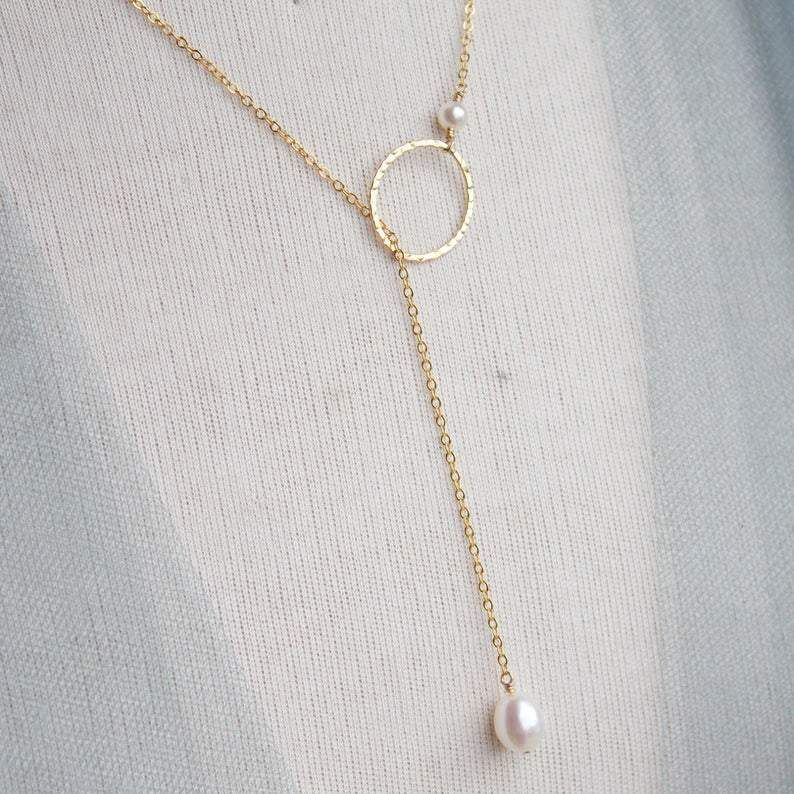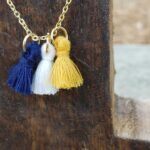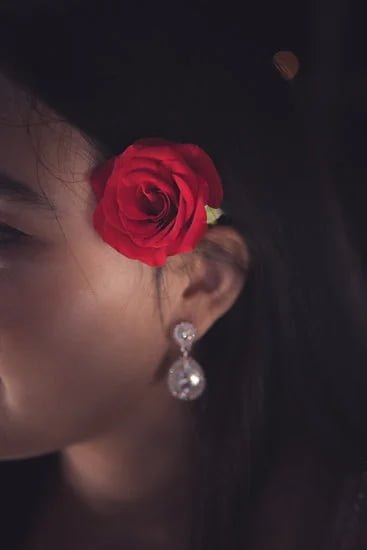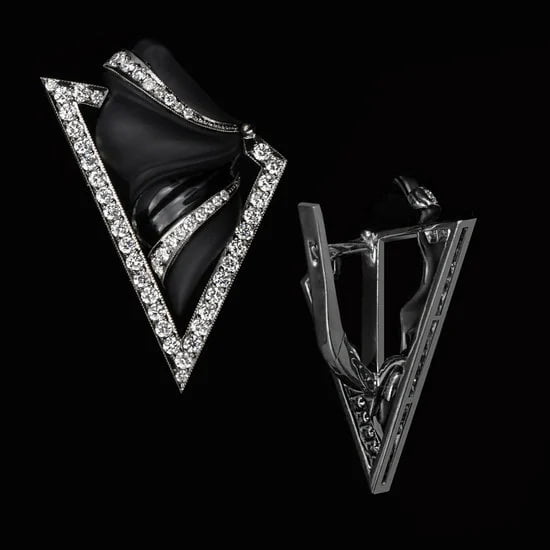Are you passionate about diamonds and design? If so, then becoming a diamond jewelry designer may be the perfect career choice for you. This article will guide you through the steps and skills needed to embark on this exciting profession and create stunning pieces of diamond jewelry.
Diamond jewelry design is not only a creative outlet but also a lucrative career choice. The allure of these exquisite gems combined with the artistry of design has always captivated individuals around the world. From engagement rings to necklaces, earrings to bracelets, diamond jewelry holds a timeless appeal that transcends cultures and trends.
To succeed as a diamond jewelry designer, you need to have a solid foundation in both the technical aspects of jewelry-making and an eye for style. Understanding the basics of design principles, such as color harmony and composition, is essential. Additionally, knowledge of gemology and an understanding of diamond cuts, clarity, and settings are crucial in creating captivating designs.
In this article, we will explore the essential skills necessary to become a successful diamond jewelry designer. We will delve into various educational pathways available to aspiring designers, including degree programs and apprenticeships. Additionally, we will discuss how to develop your own unique design aesthetic that sets you apart from others in this competitive industry.
With determination, creativity, and the right skills, you can turn your passion for diamonds into a rewarding career as a diamond jewelry designer. So let’s begin this journey together and unlock your potential in this exciting profession.
Understanding the Basics
To become a successful diamond jewelry designer, it is important to have a strong foundation of essential skills and knowledge. Understanding the basics will not only help you create unique and stunning designs, but also set you apart from the competition in this lucrative career field.
One of the most crucial skills for a diamond jewelry designer is a good eye for detail. As a designer, you will be working with precious gemstones and metals, so having an eye for quality and craftsmanship is essential. This skill can be developed through practice and experience, as well as by studying the work of established designers.
In addition to having an eye for detail, having creativity and artistic flair is vital for designing diamond jewelry. Being able to come up with innovative ideas and think outside the box will help you create pieces that are unique and captivating. This can be nurtured by constantly seeking inspiration, experimenting with different design techniques, and keeping up with current trends in the industry.
Another important aspect of understanding the basics is gaining knowledge about diamonds themselves. Familiarizing yourself with the 4Cs of diamonds – cut, color, clarity, and carat weight – will allow you to make informed decisions when selecting stones for your designs. Additionally, learning about different types of diamond cuts, such as round brilliant or princess cut, will help you create designs that showcase these cuts in their best light.
| Essential Skills | Knowledge |
|---|---|
| A good eye for detail | Familiarity with the 4Cs of diamonds |
| Creativity and artistic flair | Understanding different types of diamond cuts |
By developing these essential skills – an eye for detail and creativity – along with a sound knowledge of diamonds, you will be well on your way to becoming a successful diamond jewelry designer. Investing time and effort into understanding the basics will lay a solid foundation for your career, enabling you to create stunning and unique pieces that stand out in the competitive world of diamond jewelry design.
Education and Training
Many aspiring diamond jewelry designers choose to pursue formal education and training in order to gain the necessary skills and knowledge for success in the field. There are various academic and vocational pathways available that cater to different levels of experience and expertise. Whether you prefer a traditional classroom setting or a hands-on apprenticeship, there are options to suit your learning style.
Degree Programs
One popular route is to pursue a degree program in jewelry design or a related field. These programs can range from associate degrees to bachelor’s degrees, and even master’s degrees in some cases. A degree program provides a comprehensive education that covers design principles, gemology, diamond grading, metalworking techniques, and business management skills. It also allows for ample opportunities to experiment with different materials and gain practical experience through internships or collaborations with industry professionals.
Apprenticeships
For those who prefer a more hands-on approach, apprenticeships offer valuable on-the-job training under the guidance of experienced jewelry designers. Apprenticeships often involve learning various techniques such as stone-setting, casting, engraving, and polishing.
This type of training allows aspiring designers to develop their skills through practical application while gaining insight into the day-to-day operations of a working studio. Apprenticeships are highly regarded within the industry as they provide firsthand experience and mentorship that can be invaluable for building a successful career.
Vocational and Trade Schools
Another option is to attend vocational or trade schools that specialize in jewelry design. These schools offer shorter-term programs focused specifically on developing technical skills related to jewelry making. Students learn techniques such as soldering, stone setting methods, casting processes, mold-making, CAD software usage, and more. Vocational schools often provide accelerated programs that allow for quick entry into the workforce or serve as a steppingstone towards further higher education if desired.
Overall, choosing the right education or training pathway as a diamond jewelry designer depends on your goals, preferences, and resources. Whether you opt for a formal degree program, an apprenticeship, or vocational training, these opportunities provide the necessary foundation to begin your journey in this exciting and rewarding field.
Developing a Personal Style
Aspiring diamond jewelry designers need to develop their own unique style in order to stand out in the highly competitive industry. Cultivating a distinctive design aesthetic not only helps designers differentiate themselves from their peers, but it also allows them to express their creativity and create pieces that resonate with their target audience. Here are some tips and techniques on how to develop a personal style as a diamond jewelry designer:
- Study Different Design Movements: Take the time to research and understand various design movements, such as Art Nouveau, Art Deco, or Minimalism. By studying the work of renowned designers and understanding the characteristics of these different styles, you can gain inspiration and incorporate elements into your own designs. Experimenting with different design principles can help you find your own unique voice.
- Find Your Inspiration: Look for sources of inspiration beyond jewelry design itself. Explore art, fashion, nature, architecture, or even music for ideas that speak to you personally. Keep a sketchbook or create a digital mood board where you can collect images, textures, colors, and patterns that inspire you. Regularly revisiting your collection of inspirations will help refine your personal style over time.
- Pay Attention to Detail: One aspect that sets successful designers apart is their attention to detail. From intricate metalwork to meticulously chosen gemstones and delicate engravings, paying attention to even the smallest details can elevate a piece of jewelry and make it truly extraordinary. Develop an eye for detail by observing everyday objects closely and considering how those details could be incorporated into your designs.
By following these tips and techniques, aspiring diamond jewelry designers can begin developing their own personal style that sets them apart from the competition. Remember that cultivating a distinctive design aesthetic takes time and experimentation – so don’t be afraid to explore different ideas until you find your own unique voice. The more you practice, the clearer and stronger your personal style will become.
| Tips and Techniques for Developing a Personal Style |
|---|
| Study different design movements to gain inspiration |
| Find sources of inspiration beyond jewelry design |
| Pay attention to detail in your designs |
Mastering the Art of Sketching
Sketching is a crucial skill for diamond jewelry designers as it allows them to visualize their ideas and bring them to life on paper. A well-executed sketch can communicate design elements, proportions, and overall aesthetics, serving as a blueprint for the creation of stunning pieces.
To develop the ability to sketch effectively, aspiring diamond jewelry designers should begin by practicing basic drawing techniques such as understanding shapes, lines, shading, and perspective. These fundamental skills lay the groundwork for creating more intricate and detailed sketches. Additionally, studying and observing various types of jewelry designs can provide inspiration and help designers understand how different elements work together harmoniously.
One important aspect of mastering sketching is developing a personal style. While learning from existing designs is essential in the beginning stages, it is crucial for designers to cultivate their own unique design aesthetic. This can be achieved by experimenting with different styles, incorporating personal motifs or themes, and continuously refining their techniques.
Examples of Basic Drawing Techniques
| Technique | Description |
|---|---|
| Line drawing | Drawing objects using simple lines without shading or tonal values. |
| Contour drawing | Drawing the outlines of an object with continuous lines without lifting your pencil off the paper. |
| Value shading | Using shading techniques to create variations in lightness and darkness to give depth and volume to an object. |
| Perspective drawing | Drawing objects in a way that shows their spatial relationships and creates the illusion of three-dimensional space. |
Choosing the Right Materials
When it comes to becoming a diamond jewelry designer, understanding the materials you work with is crucial. The right choice of diamond cuts, settings, and metals can make all the difference in creating stunning and unique pieces. Here are some key points to consider about each element:
- Diamond Cuts: Diamonds come in various shapes and cuts, each with its own brilliance and character. Some popular diamond cuts include round brilliant cut, princess cut, emerald cut, and marquise cut. Each cut has its own unique qualities that contribute to the overall aesthetic of a piece of jewelry.
- Settings: The setting refers to how diamonds or gemstones are held in place within a piece of jewelry. There are several types of settings commonly used in diamond jewelry design, including prong setting, bezel setting, channel setting, and pave setting. Each setting has its own advantages and can create different visual effects.
- Metals: The choice of metal for a piece of diamond jewelry can greatly impact its overall look and feel. Common metals used in jewelry design include gold (yellow, white, or rose), silver, platinum, and palladium. Different metals have different properties such as strength, color intensity, and durability which can influence the design process.
Understanding the significance of these materials is essential for any aspiring diamond jewelry designer. It allows you to make informed choices that align with your vision for each piece you create.
To learn more about diamond cuts, settings, and metals used in jewelry design:
- Research reputable sources such as books or online articles that provide detailed information on these topics.
- Attend workshops or seminars conducted by experienced jewelers who can share their expertise.
- Study existing jewelry designs that incorporate various cuts, settings, and metals to gain inspiration from industry professionals.
By developing a deep understanding of these materials, you’ll be able to create jewelry that not only captures the beauty of diamonds but also reflects your own unique style as a designer.
Embracing Technology
In today’s digital age, embracing technology is crucial for success in any field, including diamond jewelry design. As a diamond jewelry designer, harnessing the power of CAD (Computer-Aided Design) software and 3D printers can help bring your designs to life in a digital format, saving time and money while allowing you to showcase your creativity in a more efficient and precise way.
One of the key advantages of CAD software is its ability to create detailed and accurate designs. With this software, designers can create intricate designs with precision and easily make changes or adjustments as needed. CAD allows designers to experiment with different cuts, shapes, and settings without worrying about wasting materials or creating physical prototypes.
Furthermore, 3D printers have revolutionized the jewelry industry by enabling designers to create physical models of their designs. This technology allows designers to bring their creations from the digital realm into reality quickly and cost-effectively. By 3D printing prototypes, designers can evaluate their designs more accurately and make necessary adjustments before moving forward with production.
To fully embrace technology in diamond jewelry design, it is essential to familiarize yourself with CAD software and learn how to use it effectively. Many educational institutions offer courses or programs that specifically teach CAD software for jewelry design. Additionally, there are numerous online resources available that provide tutorials and guides on using CAD software tailored for jewelry design.
Building a Portfolio
Understanding the Importance of a Portfolio
A portfolio is an essential tool for diamond jewelry designers to showcase their unique designs and attract potential clients or employers. It serves as a visual representation of your skills, creativity, and style, allowing others to assess your capabilities as a designer. A well-curated portfolio can leave a lasting impression and open doors to exciting opportunities in the industry.
Curating Your Portfolio
When creating your portfolio, it is important to showcase a diverse range of designs that highlight your skills and versatility as a diamond jewelry designer. Include pieces that demonstrate different techniques, such as various types of cuts, settings, and metals used. This will display your ability to work with different materials and styles.
However, while diversity is important, it is equally crucial to maintain a cohesive aesthetic throughout your portfolio. Consider the overall theme or design philosophy that you want to convey and ensure that each piece aligns with this vision. By doing so, you can establish a distinctive brand identity that sets you apart from other designers in the industry.
In addition to finished pieces, consider including sketches or renderings in your portfolio to give potential clients or employers insight into your creative process. These preliminary drawings can help them understand how you develop ideas from concept to final product.
Presentation Matters
The way you present your portfolio can greatly impact how it is perceived by others. Invest time in creating an organized and visually appealing presentation that enhances the overall impact of your designs. Consider using high-quality photographs or professional photography services to ensure that the true beauty of your pieces shines through.
Make sure that all images are clear and well-lit, allowing viewers to appreciate the intricate details of each design. Additionally, provide accurate descriptions for each piece, including information about materials used and any unique features or inspiration behind the design.
Lastly, remember that digital portfolios have become increasingly popular in today’s digital age. Consider creating an online portfolio or a website where potential clients or employers can easily view and access your work. This will allow you to reach a wider audience and make a lasting impression in the industry.
By dedicating time and effort into building a captivating portfolio, you will increase your chances of attracting potential clients or employers who are impressed by your unique designs and creative abilities. A well-curated portfolio can serve as a powerful marketing tool, propelling you towards a successful career as a diamond jewelry designer.
Gaining Industry Experience
Gaining industry experience is crucial for aspiring diamond jewelry designers to establish themselves in the field. This section will delve into various opportunities to gain practical knowledge and skills, including internships, networking strategies, and collaborations with established jewelry designers.
One of the most effective ways to gain industry experience is through internships. Many jewelry companies and design houses offer internship programs specifically designed for aspiring designers. These programs provide hands-on training and mentorship from experienced professionals in the industry.
Interns have the chance to learn about the entire process of jewelry design, from sketching and selecting materials to creating prototypes and final pieces. Additionally, interns often have access to cutting-edge technology and equipment that are essential in the field of diamond jewelry design.
Networking plays a vital role in any creative profession, and diamond jewelry designing is no exception. Building connections with industry professionals can open doors to valuable opportunities for collaboration or employment. Attending industry events, such as trade shows or exhibitions, allows designers to connect with potential mentors, employers, or clients. Joining professional organizations or associations related to jewelry design also provides a platform for networking with like-minded individuals who share a passion for the craft.
Collaborating with established jewelry designers is an excellent way for aspiring designers to gain valuable insight and exposure in the field. By assisting renowned designers on their projects or working together on joint ventures, aspiring designers can learn from their expertise while building their own portfolio of work. Collaborations not only offer firsthand experience but also expose designers to different styles, techniques, and perspectives that can help them develop their own unique artistic voice.
Overall, gaining industry experience through internships, networking strategies, and collaborations is essential for aspiring diamond jewelry designers looking to establish themselves in the field. These experiences provide invaluable knowledge and skills that cannot be obtained solely through academic learning. By actively seeking out these opportunities and making genuine connections within the industry, aspiring designers increase their chances of success in this exciting profession.
Launching Your Career
Marketing Yourself as a Diamond Jewelry Designer
Once you have developed your skills and established your personal style as a diamond jewelry designer, it is time to market yourself and showcase your work to potential clients. One of the most effective ways to market yourself is by building an online presence. Create a professional website or portfolio where you can display high-quality images of your designs. Use social media platforms like Instagram and Pinterest to share your work and engage with potential clients.
In addition to online marketing, networking is crucial in the jewelry industry. Attend industry events, trade shows, and exhibitions where you can meet other professionals in the field, make connections, and potentially land collaborations or commissions. It is also beneficial to join professional organizations such as the Gemological Institute of America (GIA) or local jewelry associations, as they often provide opportunities for networking and learning.
Setting Up Your Business
When setting up your business as a diamond jewelry designer, it is important to consider legal requirements and financial aspects. Consult with an attorney or business advisor to understand the necessary permits, licenses, and regulations specific to your location. Additionally, determine whether you want to establish a physical store or operate online. Each option has its own pros and cons in terms of costs, reach, and target audience.
Moreover, creating a brand identity for your business will help differentiate yourself from competitors. Develop a compelling brand story that reflects your design philosophy and resonates with potential buyers. Design a logo that captures the essence of your brand and use it consistently across all marketing materials.
Finding Clients
Finding clients may seem daunting at first but utilizing various strategies can help expand your customer base. Start by reaching out to friends, family members, and acquaintances who might be interested in purchasing custom-designed diamond jewelry or who may refer clients to you. Word-of-mouth recommendations are often powerful for attracting new customers.
Consider collaborating with other professionals in the wedding or fashion industries. Wedding planners, stylists, and photographers are often in need of unique jewelry pieces for their clients, so establishing relationships with these individuals can lead to consistent business opportunities.
Lastly, consider selling your creations through consignment at local boutiques or partnering with online retailers. These platforms already have an established customer base and can help you gain exposure to a wider audience.
By effectively marketing yourself, setting up your business correctly, and actively seeking out potential clients, you can successfully launch your career as a diamond jewelry designer. Remember that building a reputation takes time, so be patient and persistent in promoting your work and honing your craft.
Conclusion
In conclusion, becoming a diamond jewelry designer is an exciting and rewarding journey that offers immense potential for creativity and success. Throughout this article, we have explored the essential skills, education and training options, and techniques needed to excel in this field. We’ve also touched on the importance of developing a personal style, mastering sketching, choosing the right materials, embracing technology, building a portfolio, gaining industry experience, and launching your career.
By following these steps and dedicating yourself to continuous learning and improvement, you can carve out a niche for yourself in the highly competitive world of diamond jewelry design. The possibilities are endless as you create stunning pieces that reflect your unique aesthetic and captivate clients or employers.
While the road may not always be easy, the potential rewards make it all worthwhile. As a diamond jewelry designer, you have the opportunity to be part of creating timeless pieces that hold sentimental value for generations to come. You can experience the joy of seeing your designs on runways or adorning celebrities at red carpet events.
If you have a passion for design and gems, don’t hesitate to take the leap into this exciting profession. With dedication, hard work, and talent, you can turn your love for diamonds into a fulfilling career as a diamond jewelry designer. So begin your journey today and let your imagination sparkle through stunning creations that will leave an indelible mark in the world of jewelry design.
Frequently Asked Questions
How do you become a diamond jewelry maker?
To become a diamond jewelry maker, one typically needs to start by gaining a thorough understanding of the craft of jewelry making. This involves learning various techniques such as metalworking, shaping and polishing gemstones, and setting diamonds. Many aspiring jewelry makers choose to pursue formal education in the form of a jewelry design or metalsmithing program offered by art schools or vocational schools.
These programs teach students the fundamentals of jewelry making while providing hands-on experience in working with different materials and gemstones. Additionally, apprenticeships or internships with established jewelers can offer valuable practical skills and mentorship opportunities. Becoming a skilled diamond jewelry maker also requires continuous self-improvement, staying updated on new trends, techniques, and technology in the industry.
How do you become a diamond ring designer?
Becoming a diamond ring designer typically involves both artistic creativity and technical skill development. A good starting point is acquiring knowledge about diamonds, their characteristics, grading systems, and how they interact with different metals and settings. Many designers begin their journey by obtaining formal education in jewelry design or pursuing degree programs related to fine arts or design.
These programs usually cover topics like drawing, rendering techniques for jewelry designs, computer-aided design (CAD), and gemology. Developing a unique design style often comes through practice and experimentation with different materials and shapes. In this field, it is essential to stay aware of fashion trends and engage in continuous learning to refine skills and keep up with evolving tastes.
How long does it take to become a jewelry designer?
The time it takes to become a jewelry designer can vary depending on several factors such as the type of education pursued and individual dedication to skill development. Typically, completing a formal degree program in jewelry design or related fields can take two to four years at an accredited institution like an art school or university. However, many successful designers have achieved recognition without formal degrees through self-directed study or apprenticeships that may take less time but require focused dedication.
Regardless of educational path chosen, becoming proficient enough to create unique and marketable designs usually takes several more years of practical experience, experimenting with materials, staying informed about industry trends, and honing technical skills. Continuous learning and growth are essential in this creative field where innovation and adaptation are highly valued.

Welcome to my jewelry blog! My name is Sarah and I am the owner of this blog.
I love making jewelry and sharing my creations with others.
So whether you’re someone who loves wearing jewelry yourself or simply enjoys learning about it, be sure to check out my blog for insightful posts on everything related to this exciting topic!





